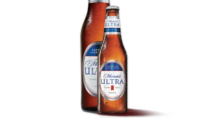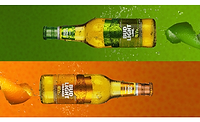2018 Beer Report: Hard seltzers latest rotation sweeping the FMB market
Segment sees positives from throwback brands

When hockey teams struggle to reach their full potential, coaches are tasked with retooling lines and developing a rotation that results in an effective power play line, penalty kill line, checking line and, of course, scoring line. Yet, finding the most effective line across the 23-active player roster to fill the 20 dressed player spots can prove challenging to even the most successful coaches.
In the U.S. beer market, manufacturers also are juggling a slew of taste profiles and trends when trying to understand what the next rotation will be when it comes to flavored malt beverages (FMBs).
“The rotation of segments within FMBs continues to drive performance. The segment is driven by experimentation and new products,” says Brian Sudano, managing partner with New York-based Beverage Marketing Corporation (BMC). “As a result, hard soda has now given way to spiked seltzer, which is driving growth within the segment. It is only a matter of how long before a newer ‘more exciting’ segment emerges.”
In the hard seltzer sub-segment of FMBs, numerous new entries and line extensions have emerged in the past year.
In early 2017, Chicago-based Mark Anthony Brands Inc. released White Claw Hard Seltzer nationwide. The brand blends seltzer water with a spike of alcohol and a hint of natural flavor, the company says. The line was released in three flavors: Natural Lime, Black Cherry and Ruby Grapefruit.
This year, White Claw is capitalizing on its first year of success by partnering with Warrior Dash as the 5K obstacle course race’s official hard seltzer brand. Legal-drinking-age Warrior Dash participants nationwide will be treated to samples of White Claw at each Warrior Dash event and will tackle a White Claw-branded obstacle along the Warrior Dash course. Additionally, White Claw will be adding to the Warrior Dash festival experience through contests and activities.
“As the No. 1 hard seltzer, White Claw is always looking for ways to help consumers live their best lives. We’re thrilled to partner with Warrior Dash and provide their hundreds of thousands of athletes with an all-natural, 100 calorie White Claw after they complete the fun and challenging 5K obstacle course,” said Ryan Heuser, director of field marketing at White Claw, citing custom data from Chicago-based Information Resources Inc. (IRI) for total U.S. multi-outlets ending Dec. 31, 2017.
Early purveyors of the hard seltzer sub-segment also have garnered success. On the national level, Norwalk, Conn.-based SpikedSeltzer, which joined Anheuser-Busch’s High End division in late 2016, announced national distribution in May 2017.
(Brand family)
| DOLLAR SALES | % CHANGE VS. PRIOR YEAR | CASE SALES | % CHANGE VS. PRIOR YEAR | |
| Bud Light Lime | $298,407,827 | -14.5 | 8,647,334 | -14.3 |
| Redd's | $284,239,080 | -10.8 | 8,774,080 | -12.2 |
| Mike's Harder | $276,198,663 | 17 | 8,222,493 | 15.7 |
| Mike's Hard | $272,549,468 | 2.5 | 7,715,991 | 1.1 |
| Twisted | $266,036,909 | 23.2 | 8,398,592 | 21.1 |
| Smirnoff Ice | $243,823,861 | 6.7 | 6,815,501 | 4.4 |
| Four Loko | $154,487,360 | 3.5 | 4,441,979 | 1.1 |
| Small Town | $60,739,912 | -42.6 | 1,427,445 | -40.3 |
| Henry's | $55,888,244 | -31.2 | 1,587,278 | -30.7 |
| Smirnoff Premium Mixed Drinks | $39,123,779 | 2.7 | 1,078,443 | 1 |
| Total sales* | $2,117,254,397 | -3.5 | 61,285,089 | -4 |
Source: Information Resources Inc. (IRI), Chicago. Total U.S. supermarkets, drug stores, gas and convenience stores, mass merchandisers, military commissaries, and select club and dollar retail chains for the 52 weeks ending Dec. 31, 2017.
“The growth of the category that Nick and I pioneered has been incredible. Between 2015 and 2016, we quadrupled our sales, and that was just in our little geography; this national expansion is a game changer,” said Dave Holmes, SpikedSeltzer founder, citing IRI data between 2015 and 2016, in a statement. “America loves their bubbles, but continues to turn away from soda and toward lighter options like sparkling water. Consumers want a flavorful alcoholic alternative that’s far less sugary than wine or hard soda, and lighter than the average beer. SpikedSeltzer is that alternative.”
However, hard seltzer brands are not the only FMBs that realized success in 2017. Chicago-based MillerCoors announced the limited return of Zima to the United States. From the Fourth of July through Labor Day weekend last year, consumers could purchase the ’90s icon in six-packs.
“Tons of people have been asking for Zima to make a comeback, and this summer seemed like the perfect time,” said Tristan Meline, senior marketing manager of innovation at MillerCoors, in a statement at the time of the release. “Whether you remember it or not, this summer is your only chance to taste the ‘it’ drink of the ’90s.”
Zima sales were more than $11.5 million in total U.S. supermarkets, drug stores, mass merchandisers, gas and convenience stores, military commissaries, and select club and dollar retail chains for the 52 weeks ending Dec. 31, 2017, according to IRI data.
Traditional FMB brands also have been a bright spot for the segment. Mark Anthony Brands Inc.’s Mike’s Hard Lemonade Co. division saw its Mike’s Hard and Mike’s Harder lines post dollar and case sales growth in 2017. According to IRI data, Mike’s Harder dollar sales were up 17 percent while case sales were up nearly 16 percent. Its Mike’s Hard brand was up 2.5 percent in dollar sales and 1.1 percent in case sales. BI
Looking for a reprint of this article?
From high-res PDFs to custom plaques, order your copy today!







